Religion has inspired some of the most enduring and iconic designs in the world of architecture, with some structures of worship standing for millennia and demonstrating the skills that ancient builders had long before the technological revolution of the 20th century.
Today, it’s common to see and identify religious structures in almost all regions around the world. Furthermore, the themes and teachings of various religions are being incorporated as part of designs that appear in a context that isn’t strictly religious, whether domestic or commercial spaces.
So, how can you identify a religious structure, and what features or characteristics should you look out for? We will look at the most popular forms of sacred architecture and highlight a few famous examples found around the world. Finally, we will look at how you can bring ancient aesthetics into your own design.
But first, what is religious architecture?
What Is Religious Architecture?
Religious architecture is a type of design incorporated into sacred spaces. This type of architecture comprises symbols that hold a deep meaning in a given faith. Since different religions have differing histories and theology, the symbols vary from one to another. However, there are some general features and characteristics of religious architecture.
Features and Characteristics of Religious Architecture
Religious buildings have symbolic features that make them stand out among other forms of architecture. Here are some features that embody religious architecture.
1) Grandeur
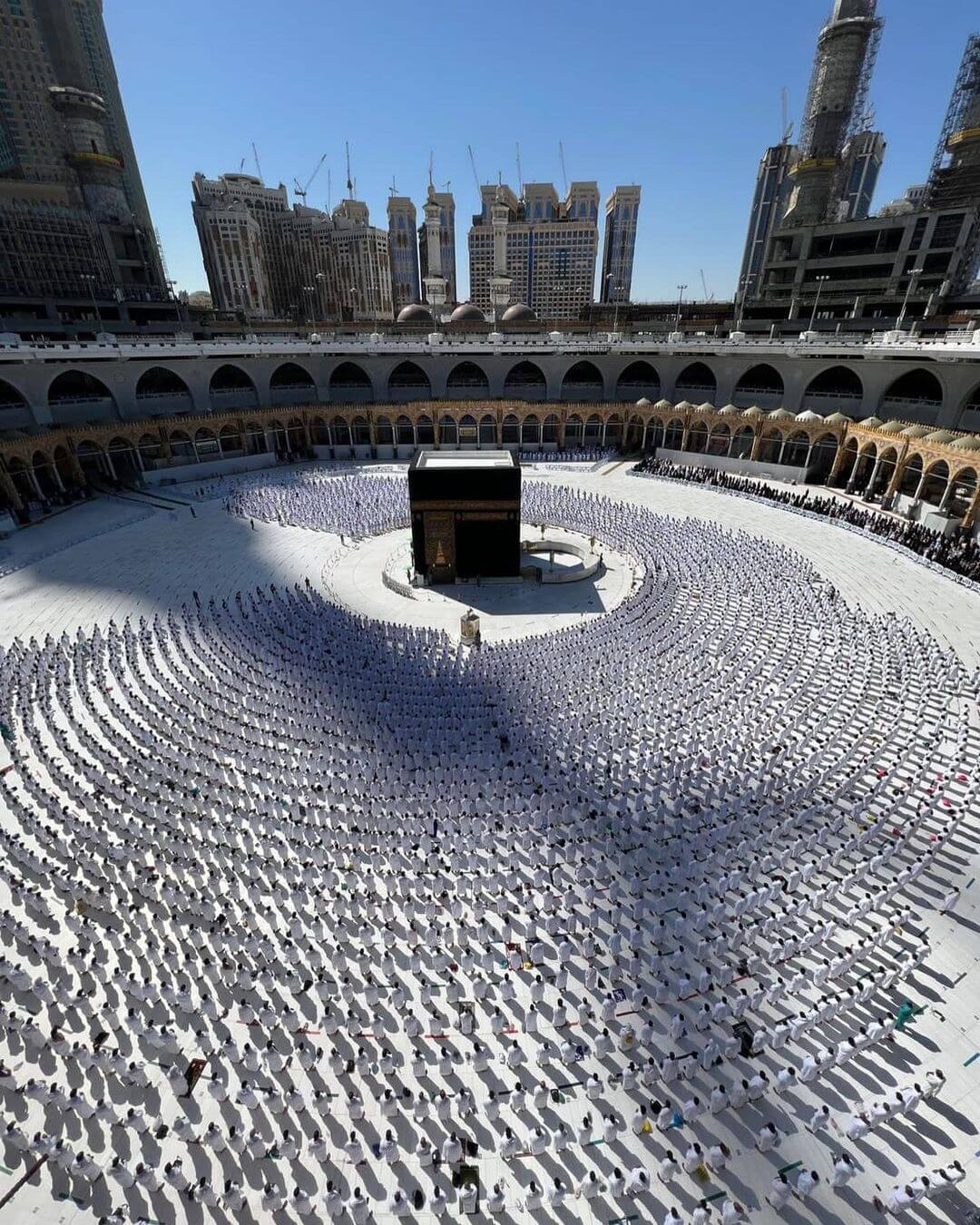
Image Source: mecca.net
Religious architecture holds an important part in the different societies it exists. The magnificence of such buildings is suggested by the majesty, opulence, and nobility that is accorded to the religious forms of architecture.
Vastness is a feature that the religious community loves. The greatest example would be the Masjid Al Haram mosque, which has a capacity of 2.5 million people and is over 350,000 square meters. Similarly, St. Peter’s Basilica is the largest church, with a capacity of 20,000 seated worshipers. St. Peter’s Square can fit up to 300,000 people, making it one of the largest squares in the world. The tombs from ancient Egypt are immense and legendary.
2) Intricacy
Even in modern religious architecture, we can see a continuation of ancient religious architectural trends and designs. One such trend is intricate designs employed in buildings. For instance, Islamic architecture is full of geometric shapes, as seen on the tiles on the floors and walls. The carpets on which worship happens have the most beautiful design shapes.
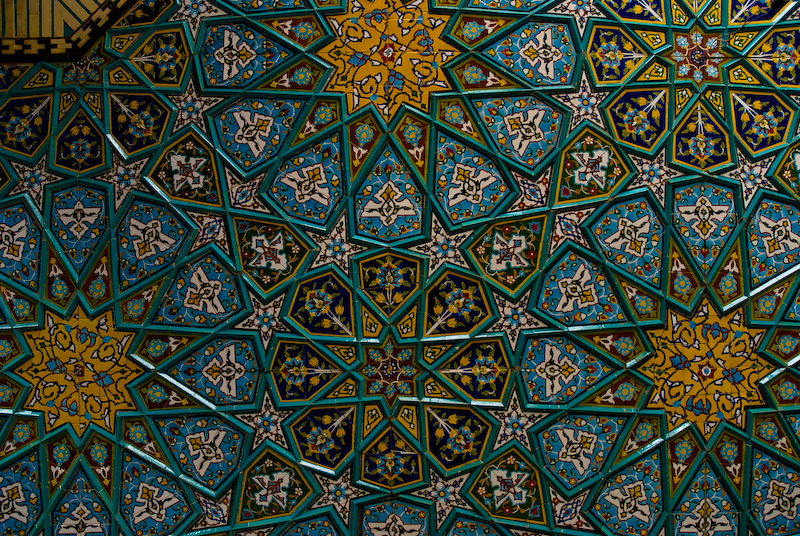
Image Source: whereisthenorth.com
Western architecture, too, has intricate designs in their religious buildings. For instance, stained glass windows have details that add to the attractiveness of the buildings. The different architectural movements have their forms of expression that bring new designs to the foreground with each period. An example would be a gothic cathedral that employs flying buttress designs, rose windows, arches, large spaces, and more intricate designs that make the architecture stand out.
Indian temples, too, have some of the most mind-boggling designs.
3) Symbolism
Religious architecture exists to keep religious beliefs alive and to create a space where faith can be practised. Symbolism helps in defining identity in different religions by creating religious imagery. For instance, the cross is used by Christians on church buildings, setting the religious setting apart from any neighboring structures. Similar to the cross, the crescent moon and the star in Islam are used in mosques.
While the symbols have a deeper meaning, they can be used to identify religious structures directly.
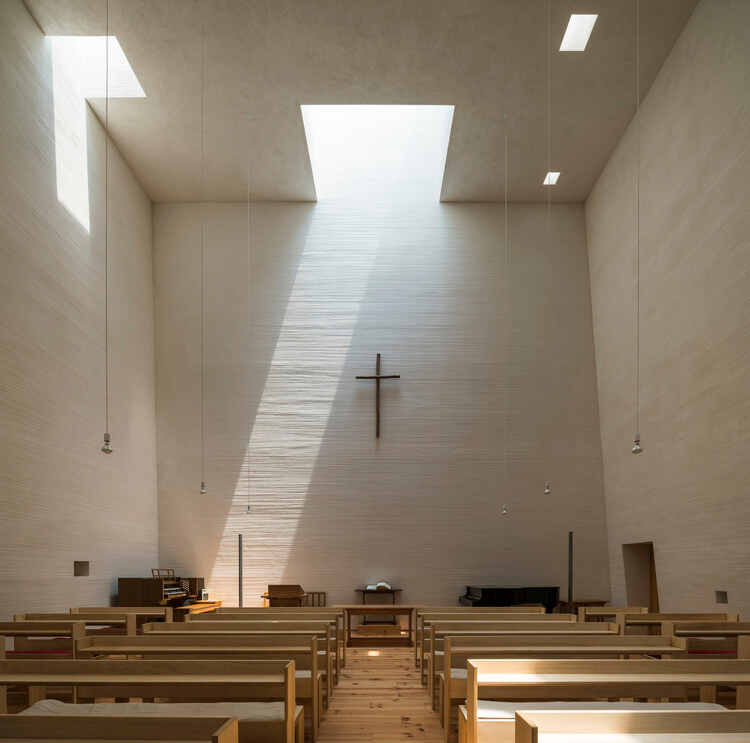
Image Source: archdaily.com
One form of symbolism is iconography, which is easier for most people to interpret. For instance, doves in Christianity symbolize the Holy Spirit, purity, innocence, and more.
4) Sculptures and Statues
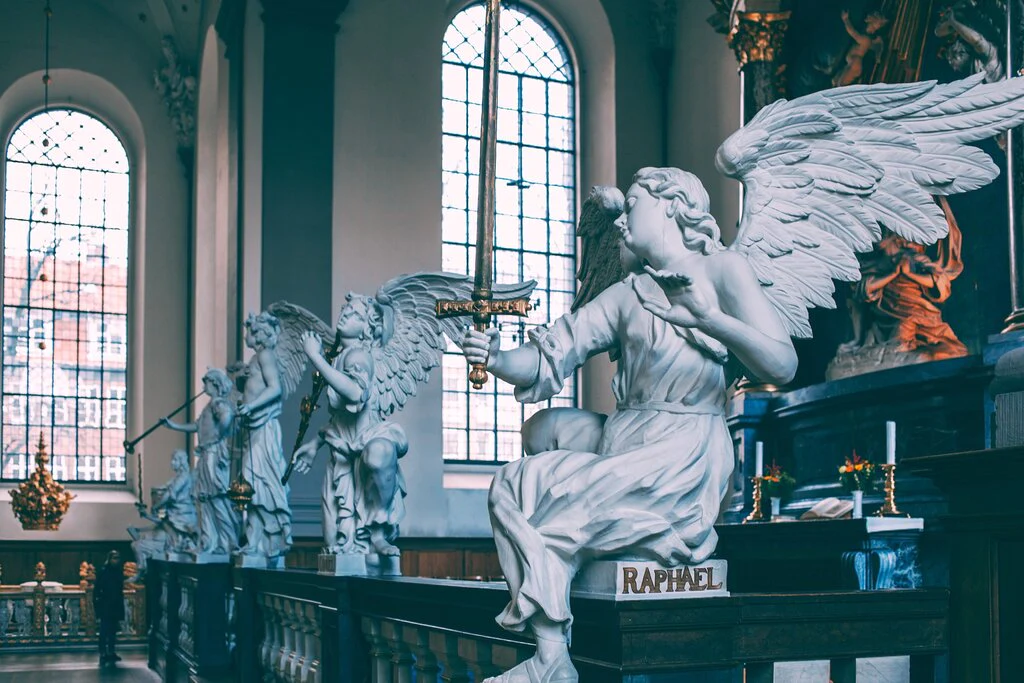
Image Source: marblebee.com
According to scholars, Hinduism is one of the oldest religions, and beautifully made statues often represent the different gods in the faith. These physical representations help the faithful meditate and focus during prayer. There are over 30 gods in Hinduism, making the Hindu temple architecture one of the most diverse and interesting.
Christians and Buddhist places of worship have also embraced statues as part of their architecture. Christians have statues of different saints, with a common one being the statue of Mary, the mother of Jesus. On the other hand, the statue of Buddha can be found in all Buddhist temples.
Most of the world’s largest statues are religious, and one of the most famous is the ‘Christ the Redeemer” in Rio de Janeiro, Brazil. The statue is also one of the Seven Wonders of the World.
Here are some of the religious statues you can see around the world;
i) Spring Temple Buddha
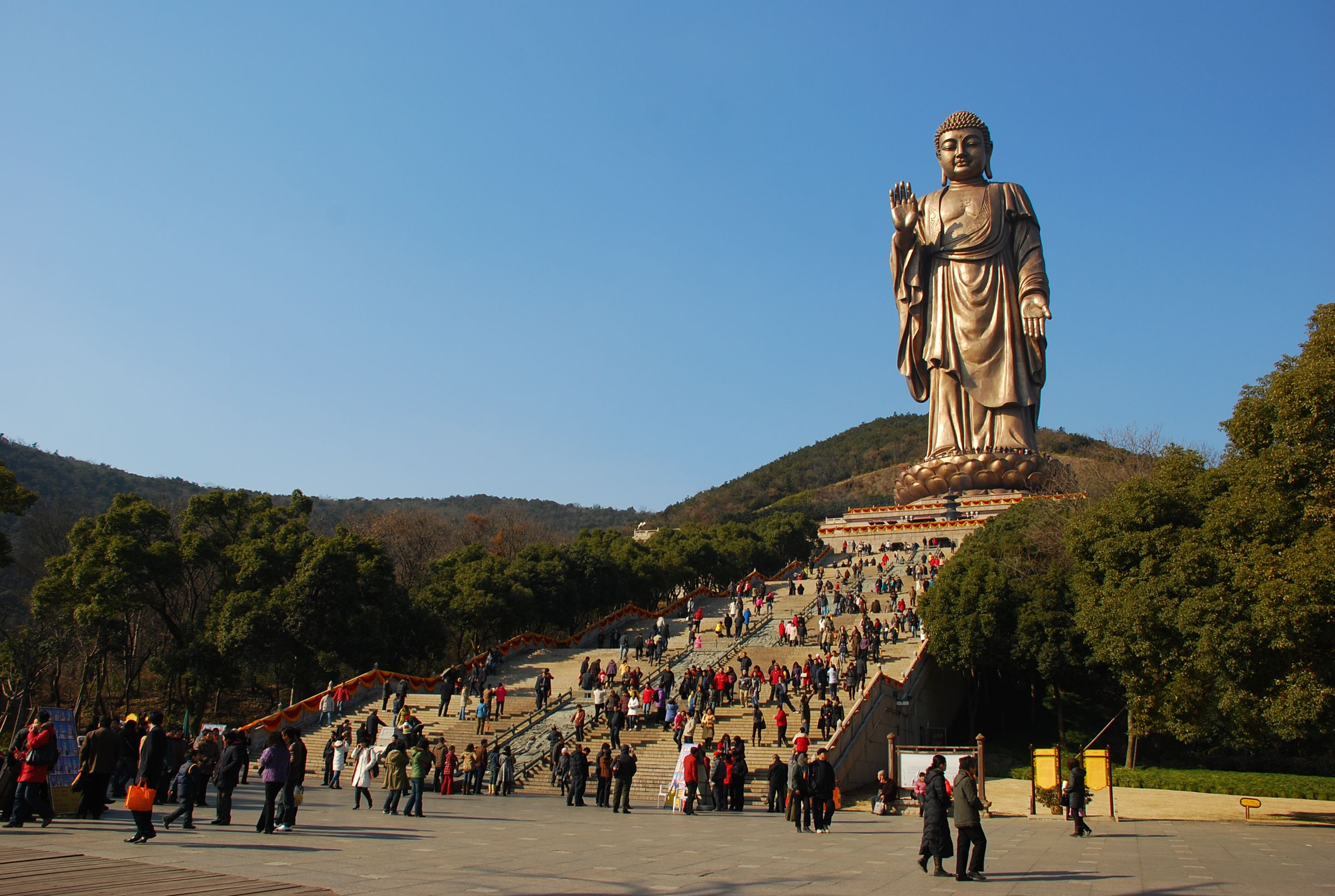
Image Source: edition.cnn.com
The Spring Temple Buddha is close to 130 meters tall and stands as the overall second-tallest statue in the world. The temple stood as the tallest statue in the world for a few months.
ii) Laykyun Sekkya

Image Source: klook.com
Laykyun Sekkya is the fourth-tallest statue in the world. The statue depicts Gautama Buddha and is next to a reclining statue of Gautama Buddha. The statue is 116 meters tall. To give you some perspective, you wouldn’t fit the statue on a soccer field.
iii) Ushiku Daibustsu Buddha
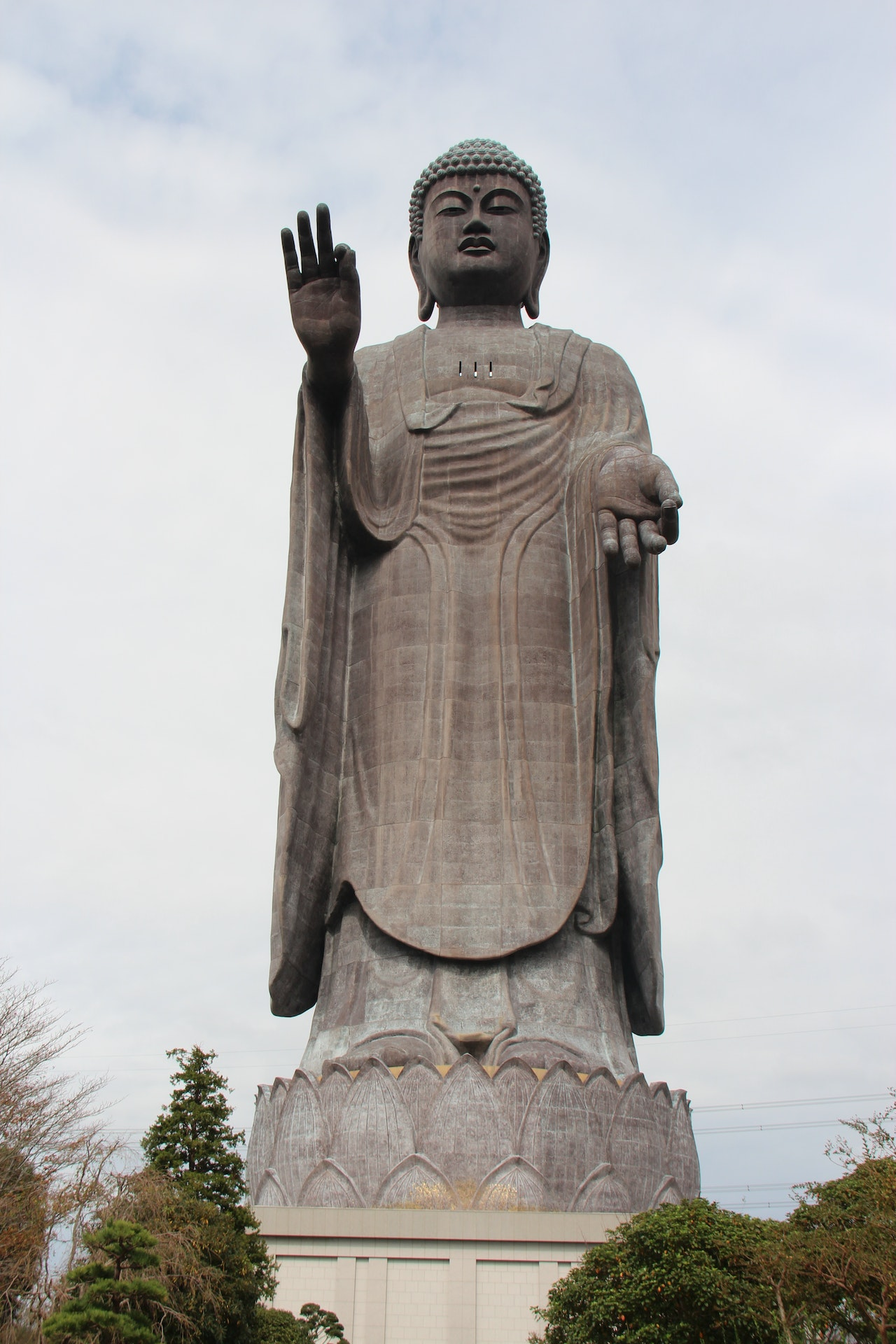
Image Source: Raweena Perera pexels.com
The Ushiku Daibutsu Buddha is 120 meters tall, with the pedestal being 20 meters. The statue is among the five largest statues in the world.
iv) Guanyin Buddha of Nanshan
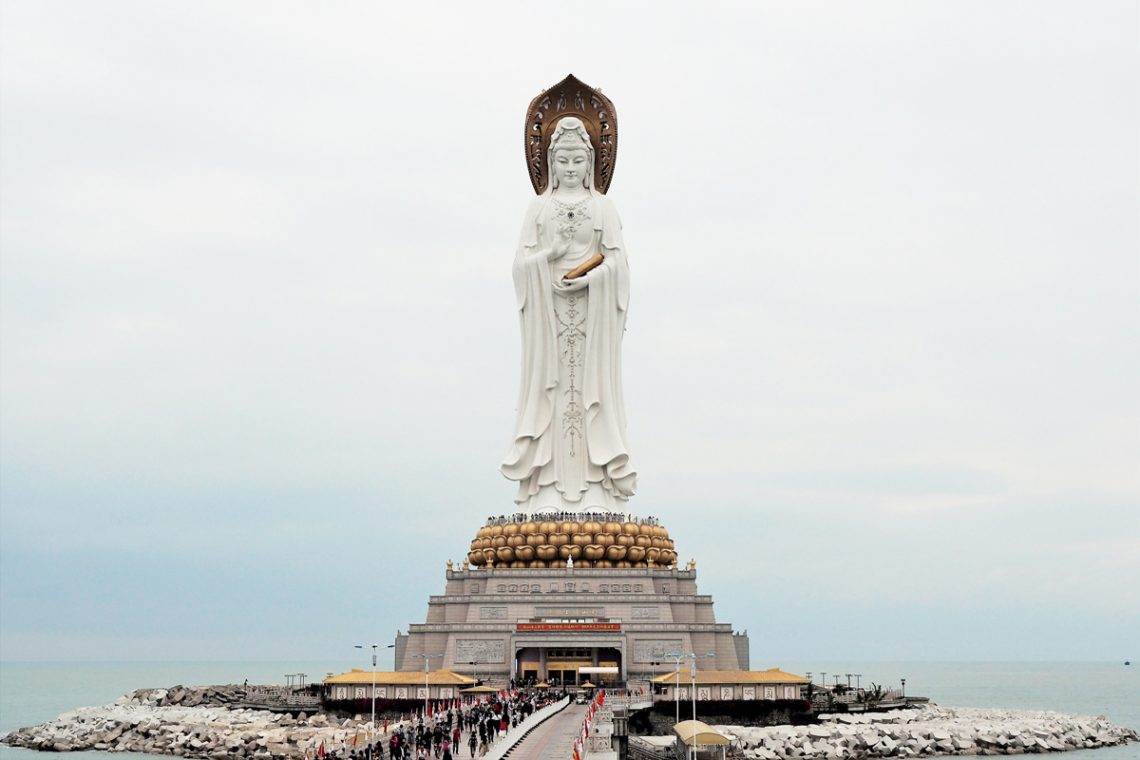
Image Source: keepcalmandjastravel.wordpress.com
Standing at 108 meters, the statue of the “Bodhisattva” Guanyin is located in China. The statue took six years to build.
v) Guanyin Buddha of a Thousand Hands and a Thousand Eyes
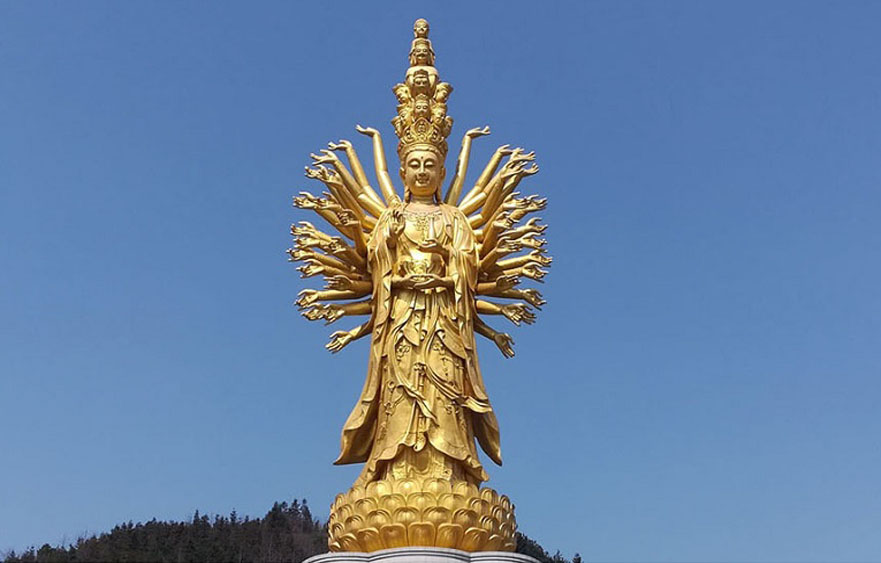
Image Source: memolands.com
The Guanyin Buddha of a Thousand Hands and a Thousand Eyes stands 99 meters tall. The statue has 20 pairs of arms and many faces.
vi) The Great Buddha of Thailand

Image Source: cuddlynest.com
Also known as the “Gran Buda en Ang Thong,” the Great Buddha is one of the largest statues in the world.
vii) Christ the Redeemer

Image Source: Luan Gonçalves on pexels.com
While Christ the Redeemer is not one of the tallest in the world, it is in the big league of the Wonders of the World alongside the Great Wall of China and the Roman Colosseum.
viii) The Pieta
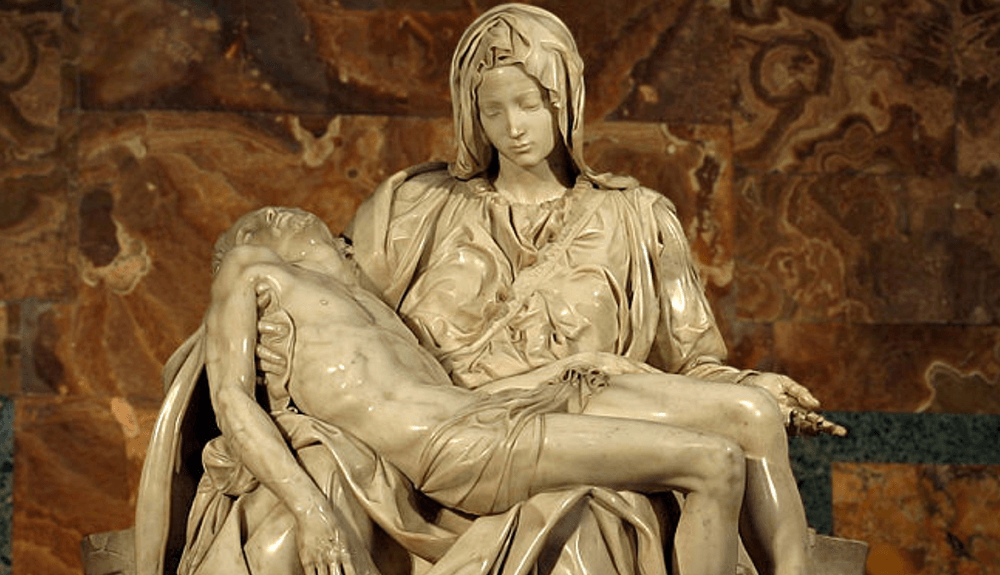
Image Source: italianrenaissance.org
Crafted by Michelangelo, one of the greatest artists who ever lived, the Pieta is one of the world’s most famous and intricate statues.
Let us further identify the major world religions by their architectural expression.
5) Islamic Architectural Features
When you glance at a mosque, you immediately know it is one. Here are the features that make it easy to identify mosques and other forms of Islamic architecture.
i. Dome
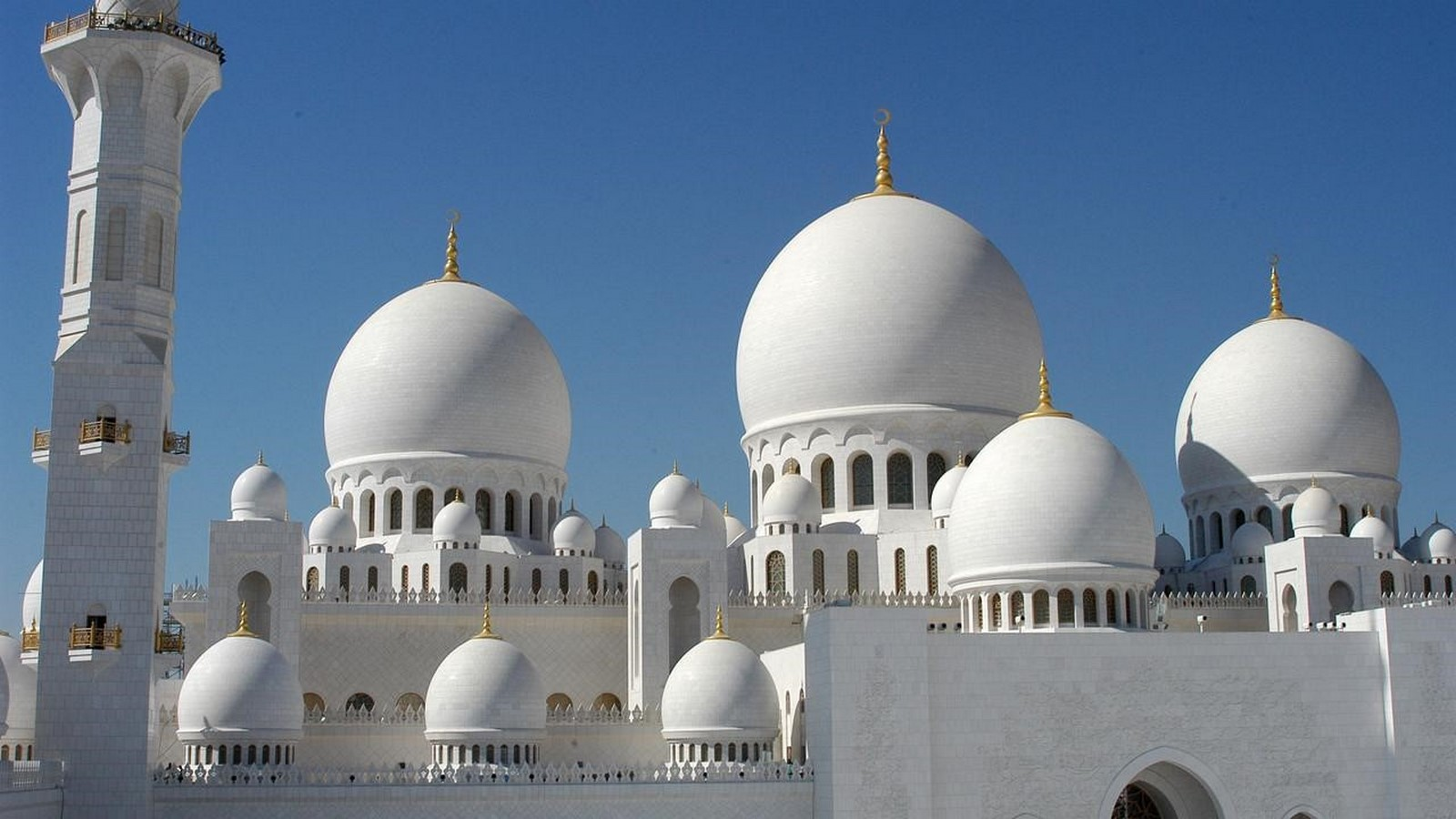
Image Source: re-thinkingthefuture.com
The dome, also called the “qubba,” is one of the most prominent features of mosques and has a religious significance.
ii. The Minaret
It is the place from which prayer is called in the mosque and also acts as a landmark to show the presence of a mosque.
iii. Mihrab
The mihrab is a niche in a mosque wall that shows where “Qibla,” which is the direction believers use to pray facing Mecca, is.
iv. Minbar
The “minbar,” similar to the pulpit, is the place in a mosque where the Imam stands to issue a sermon.
v. Moon Crescent
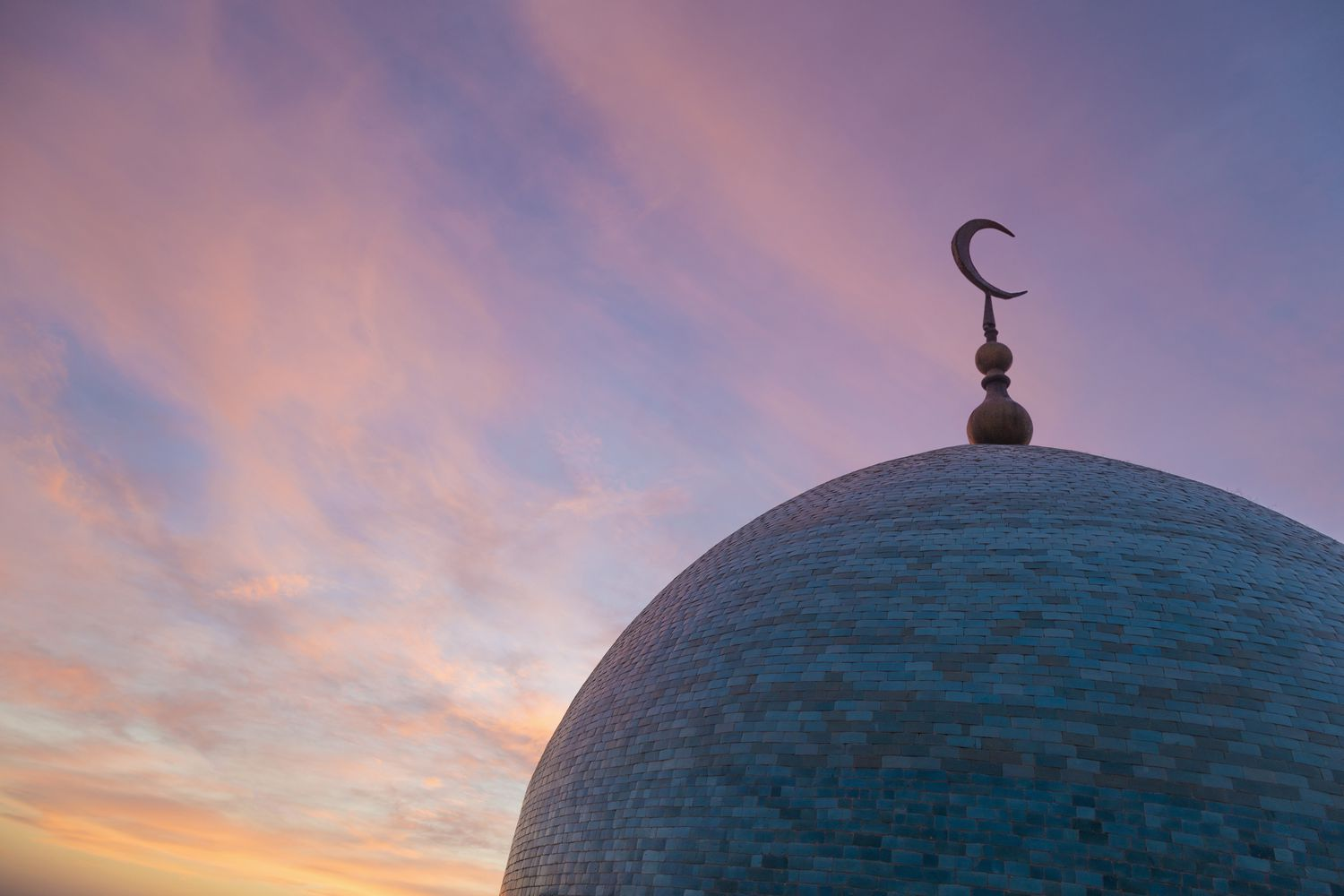
Image Source: learnreligions.com
The crescent moon and star are important symbols used in most mosques. The symbol is mostly placed on the highest point of the mosque, mostly on top of the dome.
6) Christian Architectural Features
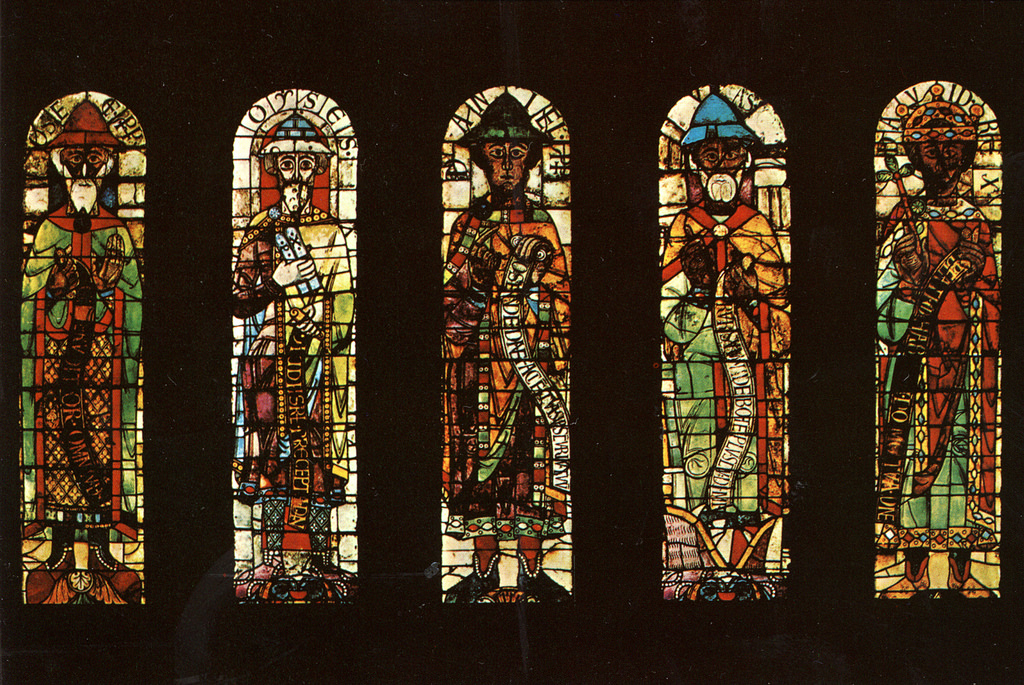
Image Source: scottishstainedglass.com
While mosques have largely maintained their traditional forms of architecture, churches have evolved and adopted more modern approaches, with others keeping the older ones.
Here are some features used in church architecture;
i) The Crucifix
For centuries, the crucifix has been the central symbol of Christianity.
ii) Pulpit
The pulpit is where the preacher stands to give sermons to believers.
iii) Stained Glass Windows
Glass stained windows are used as forms of art that show different images that Christians can use to contemplate their faith daily.
iv) Portal
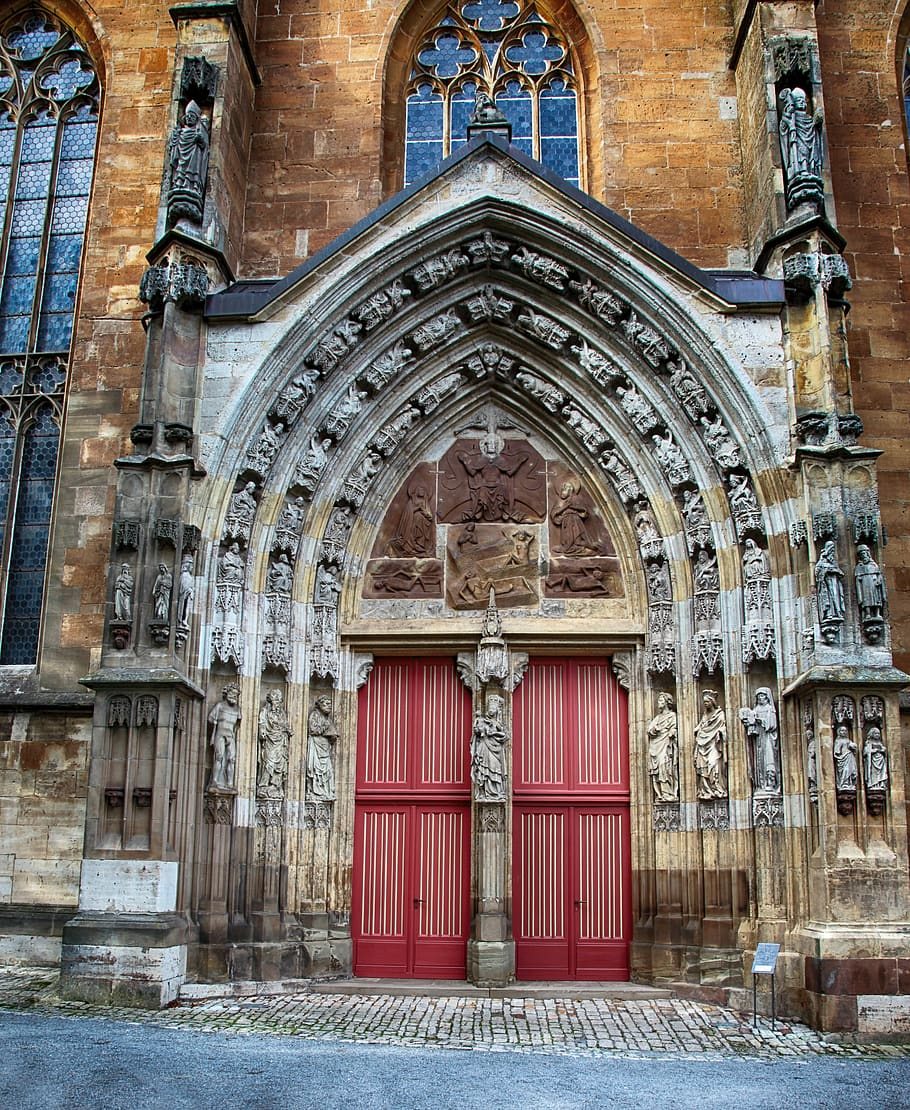
Image Source: wallpaperflare.com
At the entrance of most churches is a decoration of sculptures and stonework that welcome believers into the building.
7) Synagogue Architectural Features
The synagogue is where Judaism is practiced and has cultures similar to Christian and Islamic religions. Since Judaism, Islam, and Christianity have a lot in common, one tradition they keep is using symbolism on buildings. Here are features you can use to identify a synagogue.
a) The Star of David
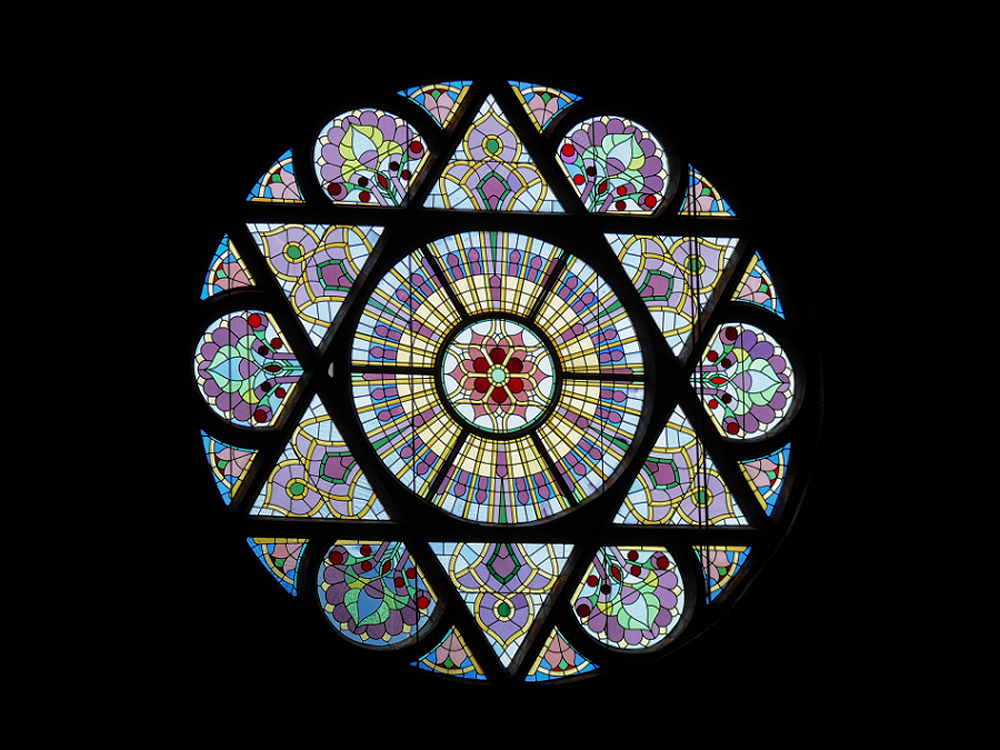
Image Source: fotocommunity.com
Similar to the rose window in Gothic cathedrals, the Star of David is placed in the most visible section of a synagogue.
b) Use of No Images
There is no use of images of people or a representation of a god using images in synagogues. This characteristic applies in mosques too.
c) Mikveh
The Mikveh is a large bath found in Jewish synagogues where a purification ritual is performed. The bath has water that does not flow and has to come from a natural source like a river, rainwater, or lake.
d) Aron Hakodesh
The Aron Hakodesh is a large cupboard found in synagogues that faces Jerusalem and represents the Ark of the Covenant.
e) Bima
Bima is a raised platform in the Synagogue where the Sefer Torah is read. It is normally constructed at the center of the synagogue or near the Aron Hakodesh.
8) Hindu Temple Architecture
While Hinduism has a lot of gods attributed to it, the Hindu temples have architectural features that stand out compared to other religions. Here are some features you will see in Hindu temples.
i) Shikhara
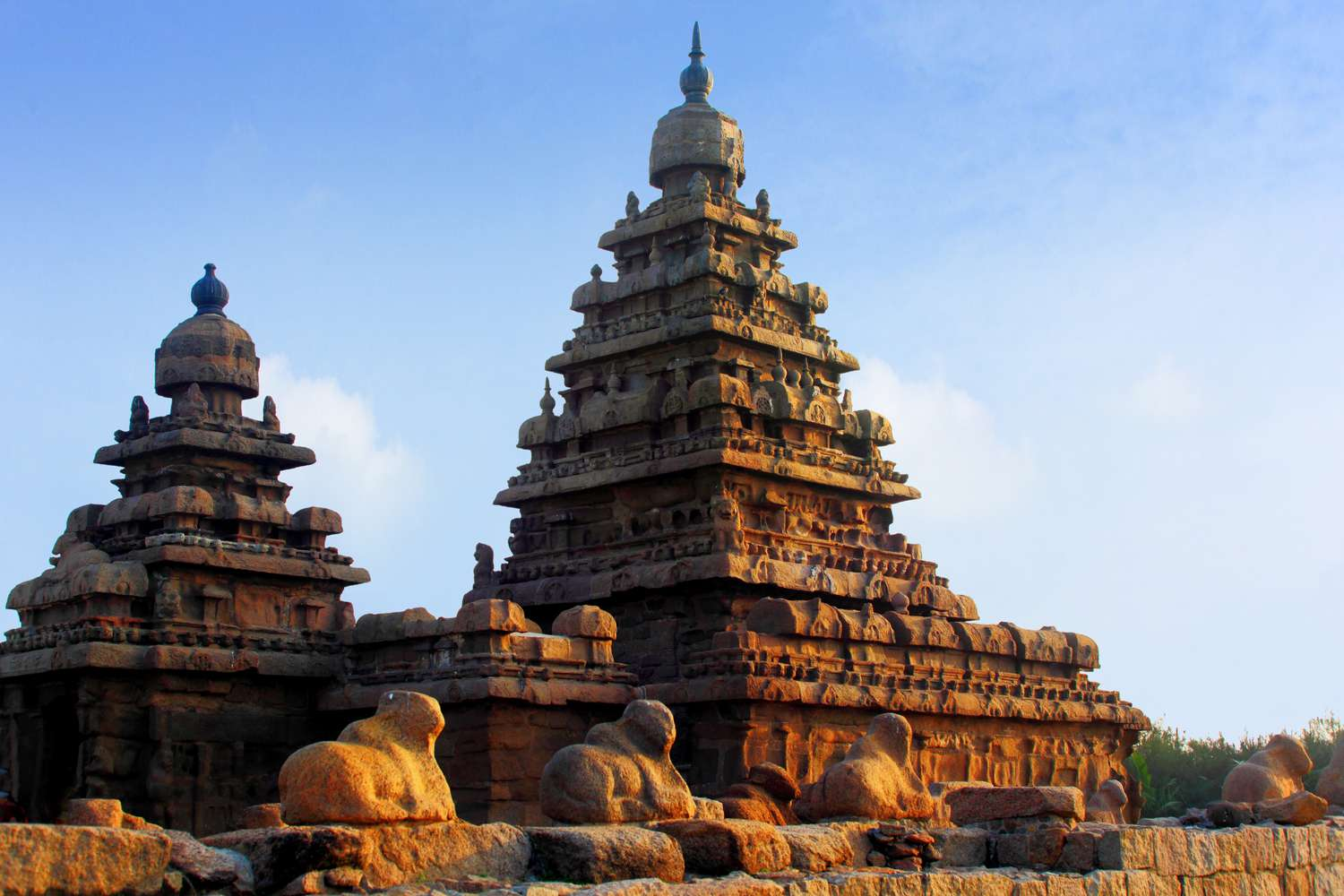
Image Source: learnreligions.com
Shikhara is a word that stands for “mountain peak” and is the structure above the sanctuary of Hindu temples. The structure can be in the form of a spire.
ii) Stone Materials
Most, if not all, Hindu temples are required to be made of stone.
iii) Statues
Hindu temples have carvings of the different gods and goddesses in the religion or scenes from the Mahabharata and Ramayana.
iv) Symbolism
Here are some instances of symbolism as seen in Hindu architecture;
-
- Inner Sanctum- A most sacred part of the temple representing a womb.
-
- Tower- Flight of the spirit to heaven.
-
- Central Shrine- Heart of the worshiper.
v) High Decorative Style
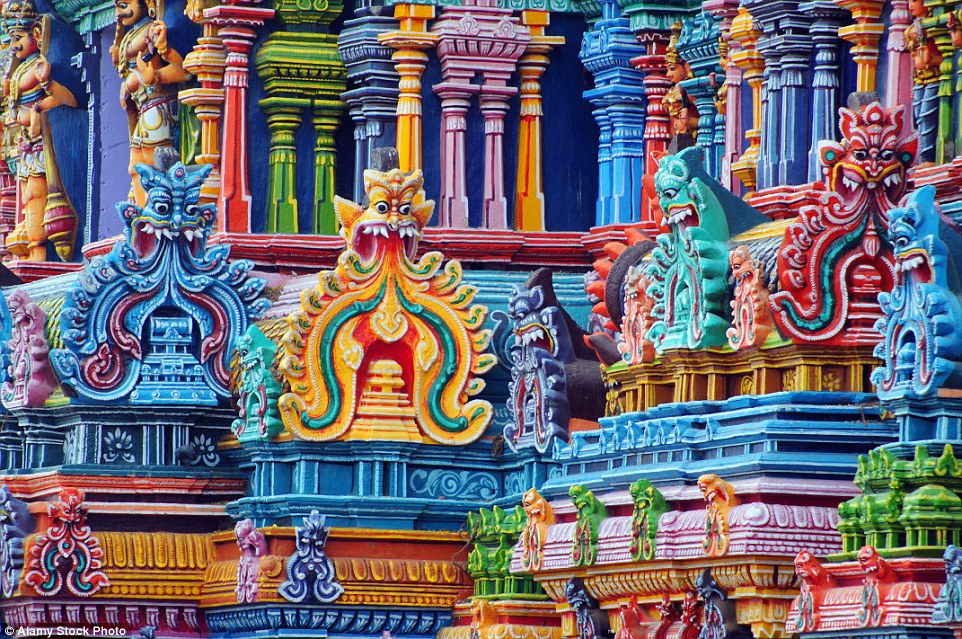
Image Source: dailymail.co.uk
The exterior of the temples has a lot of decorative elements, including sculptures, reliefs, carvings, colors, and more.
9) Buddhist Temple
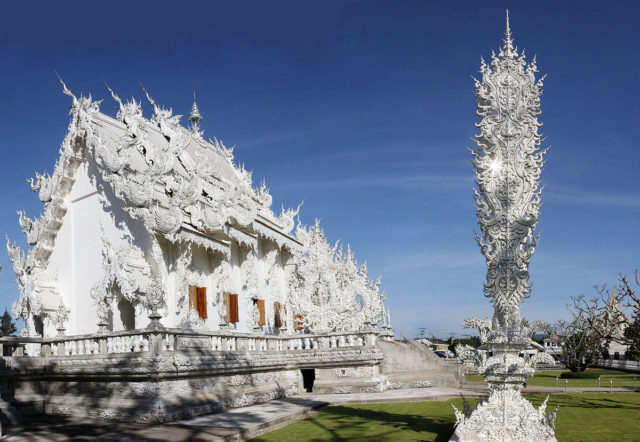
Image Source: thevintagenews.com
The most notable thing in a Buddhist temple is the statue of Buddha. Alternatively, an image of Buddha is included in the temples. For huge statues to be incorporated as parts of a design, structural and architectural decisions have to be made.
Buddhist temple designs represent five elements.
Earth– Represented by the square base of the temple
Fire– Represented by a spire in the design
Water– Represented by the dome
Wisdom– Represented by the pinnacle at the top of the building
Air-Crescent of the temple
a) Stupa
A stupa is a bell-like structure in Buddhist temples that contains relics and is used as a place for meditation.
b) Monasteries
Due to the nature of Buddhism, there are monasteries in which monks can live and access meditation cells.
Examples of Religious Architecture
a) Hagia Sophia
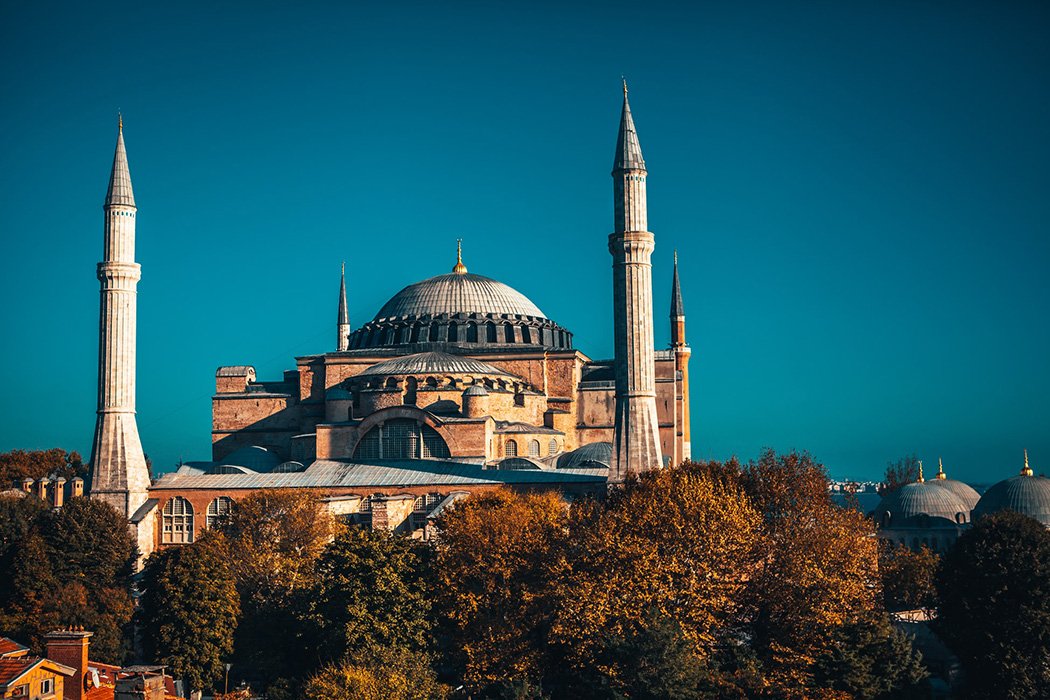
Image Source: perarose.com
Also known as the “Temple of the Holy Wisdom,” Hagia Sophia is a famous and one of the most important religious forms of architecture in the world with a rich history. The building was once an orthodox church until an attack by the Ottoman Empire and became a mosque as well, which it is in present times.
b) Temple of Heaven
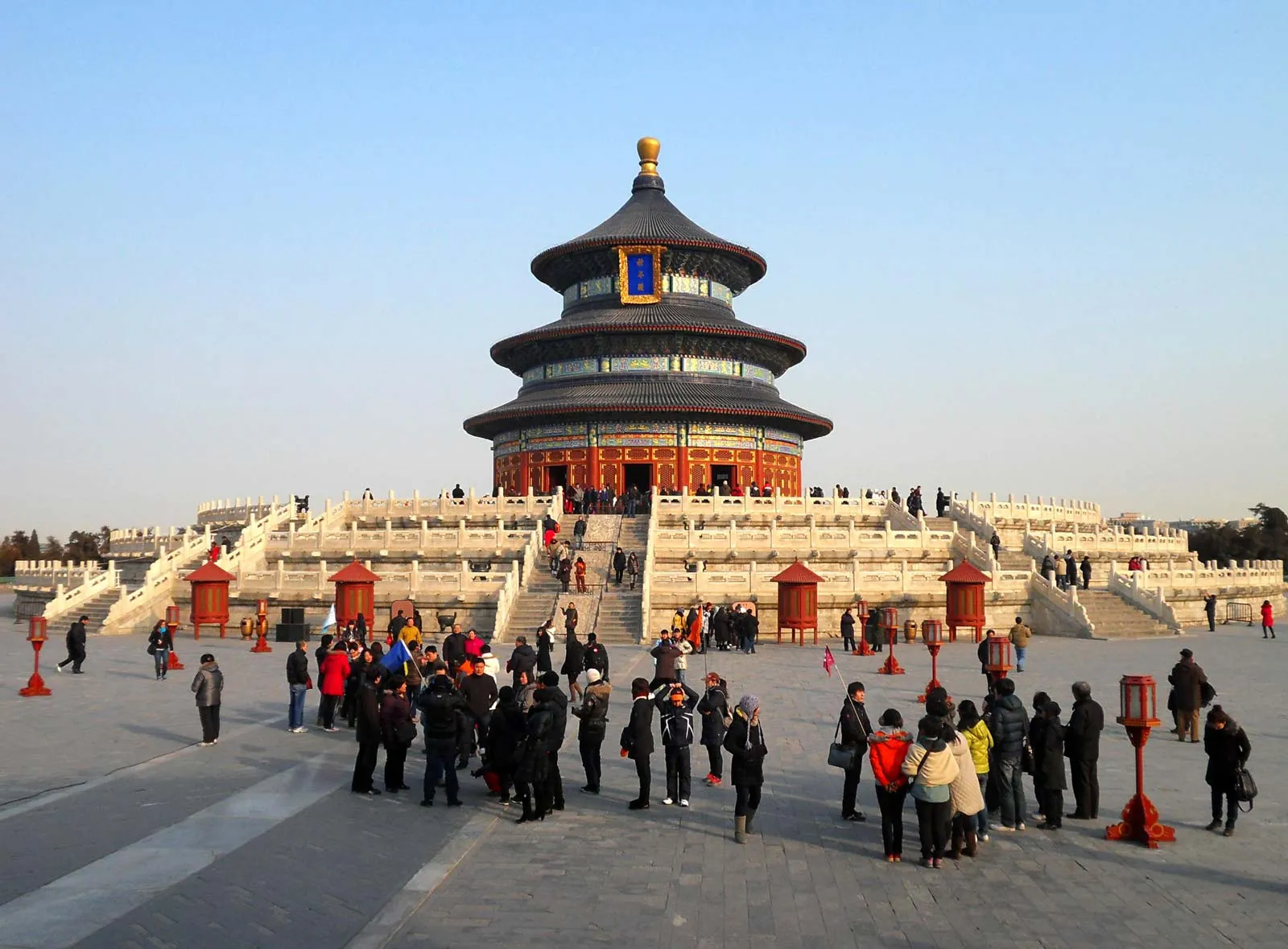
Image Source: britannica.com
The Temple of Heaven is the largest temple that offers sacrifices to heaven. Also, it represents the relationship between Earth and Heaven.
c) Angkor Wat
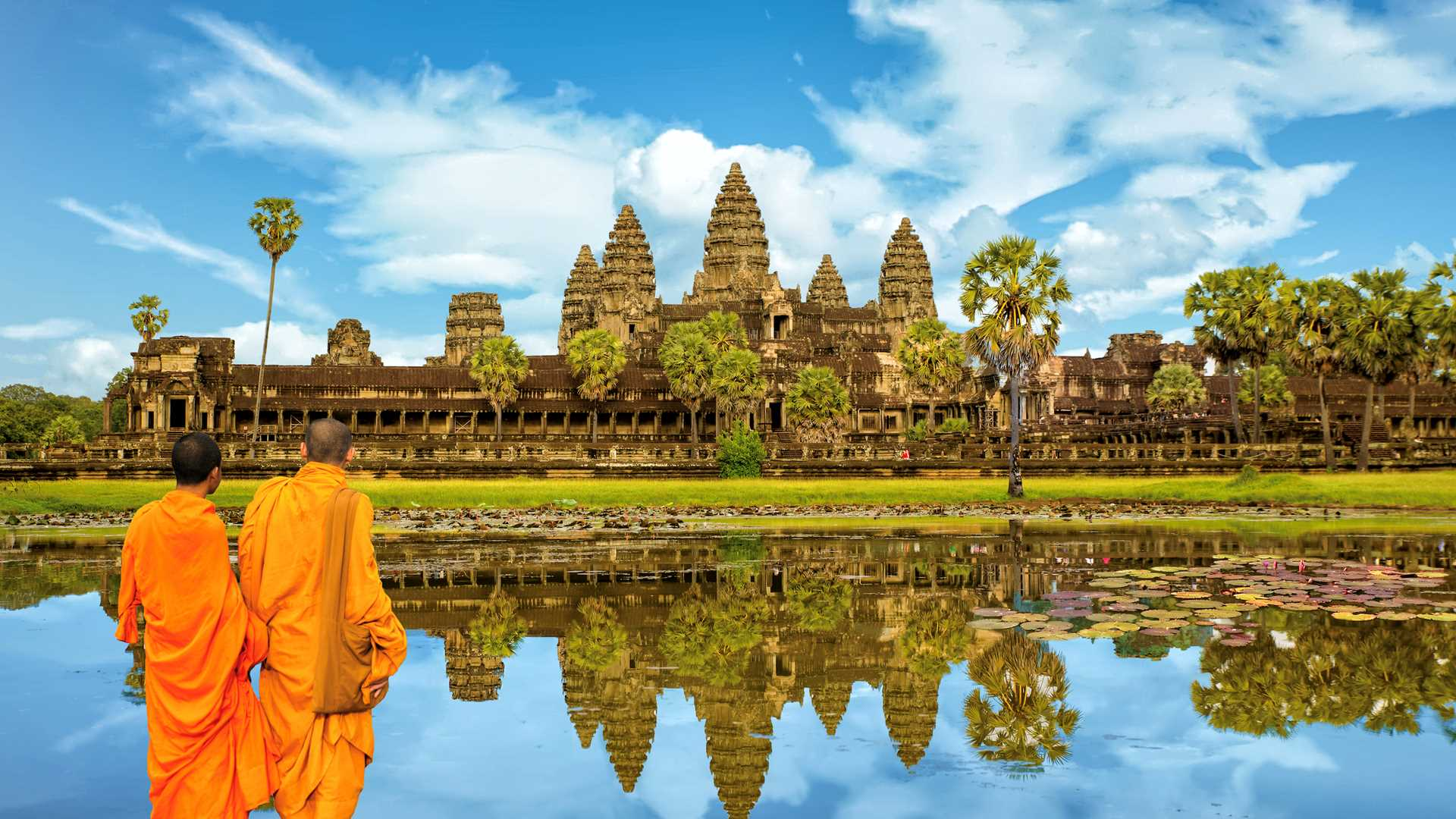
Image Source: expeditions.com
Angkor Wat measures about 162 hectares and stretches over 400 square km. Some consider Angkor Wat the largest religious structure in the world.
d) Chartres Cathedral
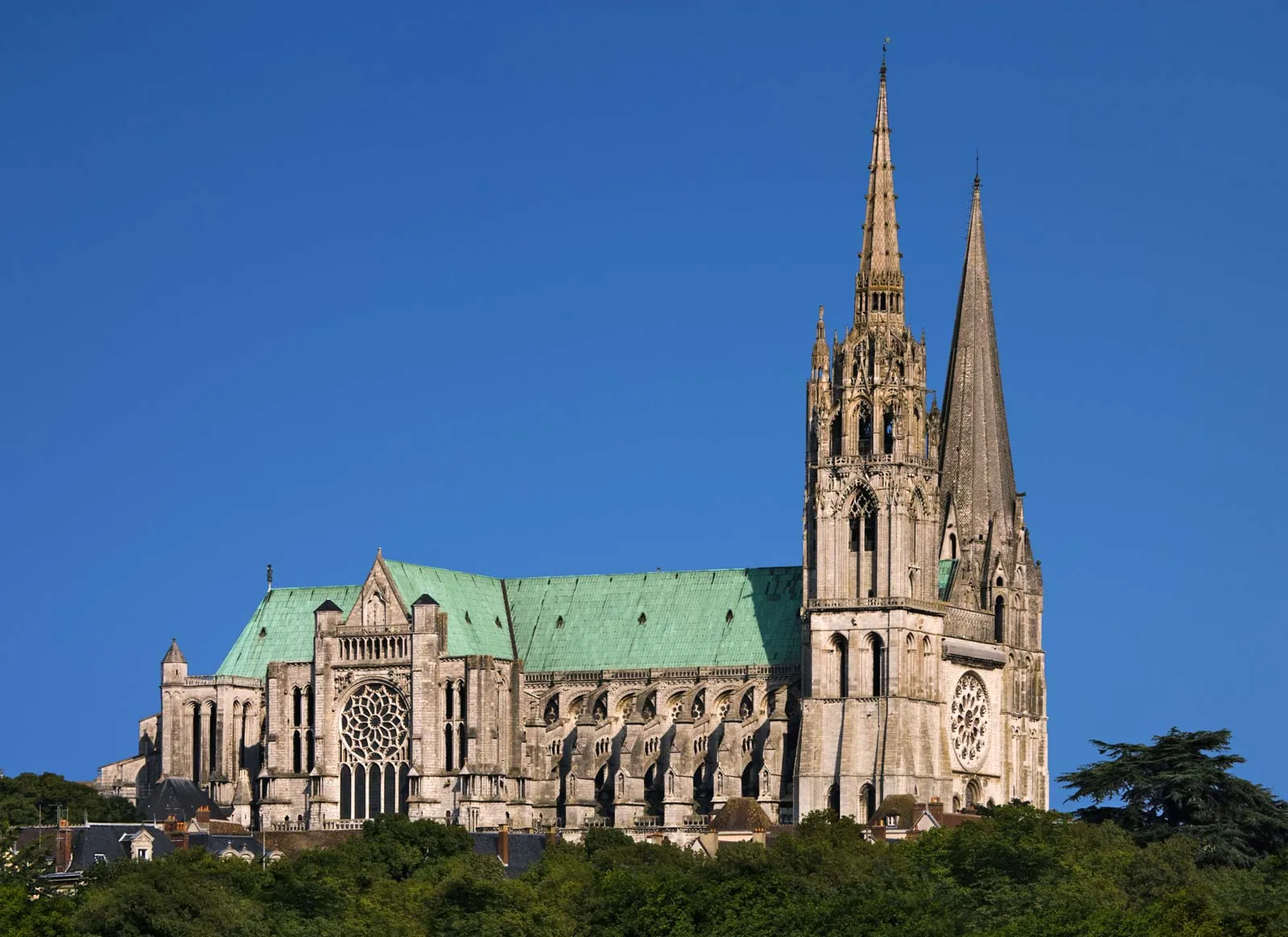
Image Source: britannica .com
The Chartres Cathedral has been around for more than 750 years and is one of the oldest religious structures in the world. The building has gone through a lot of disasters but has managed to stay relevant to date.
e) Prambanan Temple
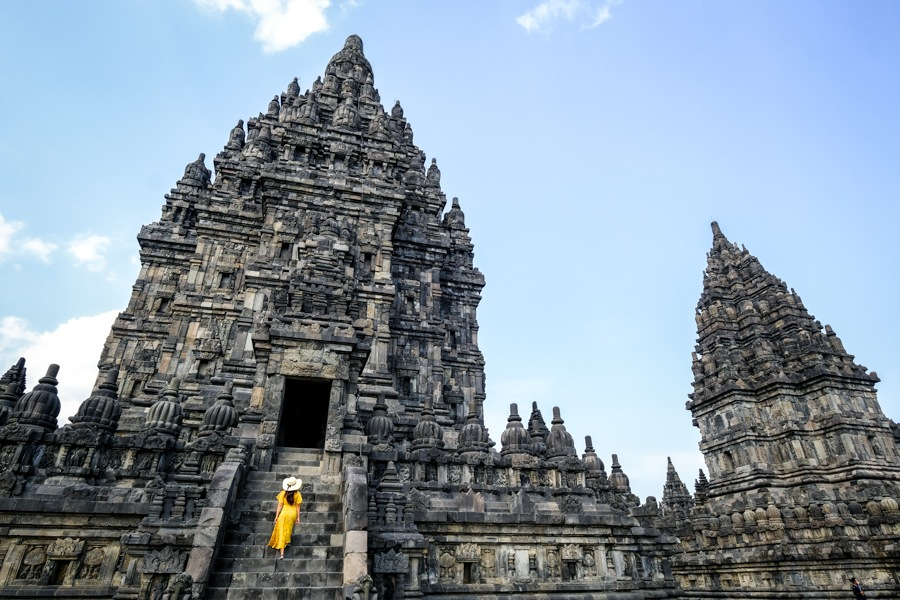
Image Source: theworldtravelguy.com
The Prambanan Temple is the largest Hindu temple in ancient Java, and its original structures were built in the 9th century. The temple faced a lot of turmoil, including an earthquake and different regimes.
Prambanan Temple is the largest temple dedicated to Shiva in Indonesia.
f) Notre Dame Cathedral
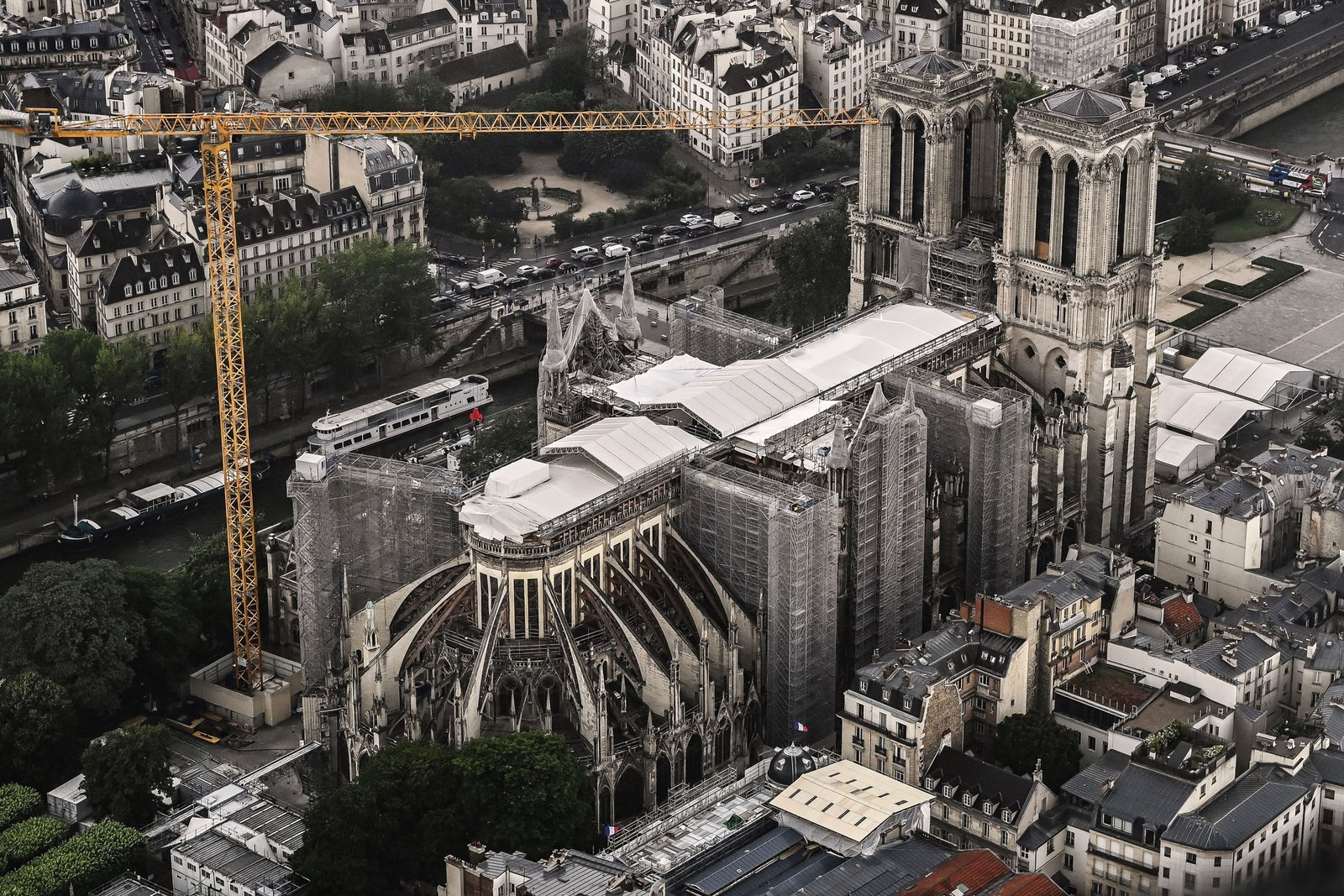
Image Source: smithsonianmag.com
The Notre Dame is one of the most popular gothic cathedrals in the world and has witnessed a lot of history, including wars, state events, and revolutions that ripped across the Western world.
The Notre Dame is breathtaking because of the design, stained windows, rose windows, carvings, soaring spires, and more features.
g) Wat Rong Khun
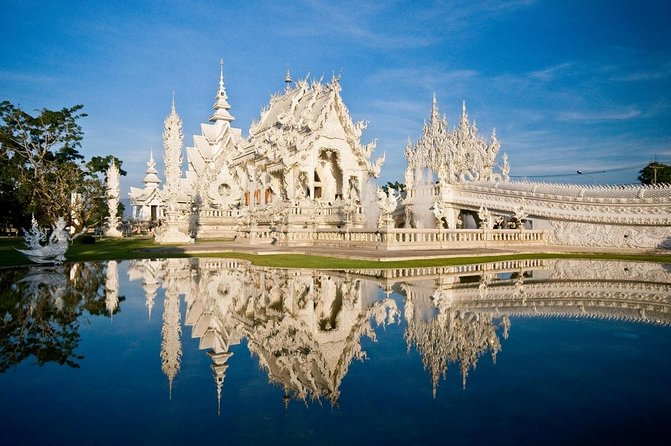
Image Source: viator.com
Wat Rong Khun is a temple that is completely white to represent the purity of Buddha. The temple further has details that symbolize Buddhist principles and the teachings of Buddha.
h) St. Peter’s Cathedral
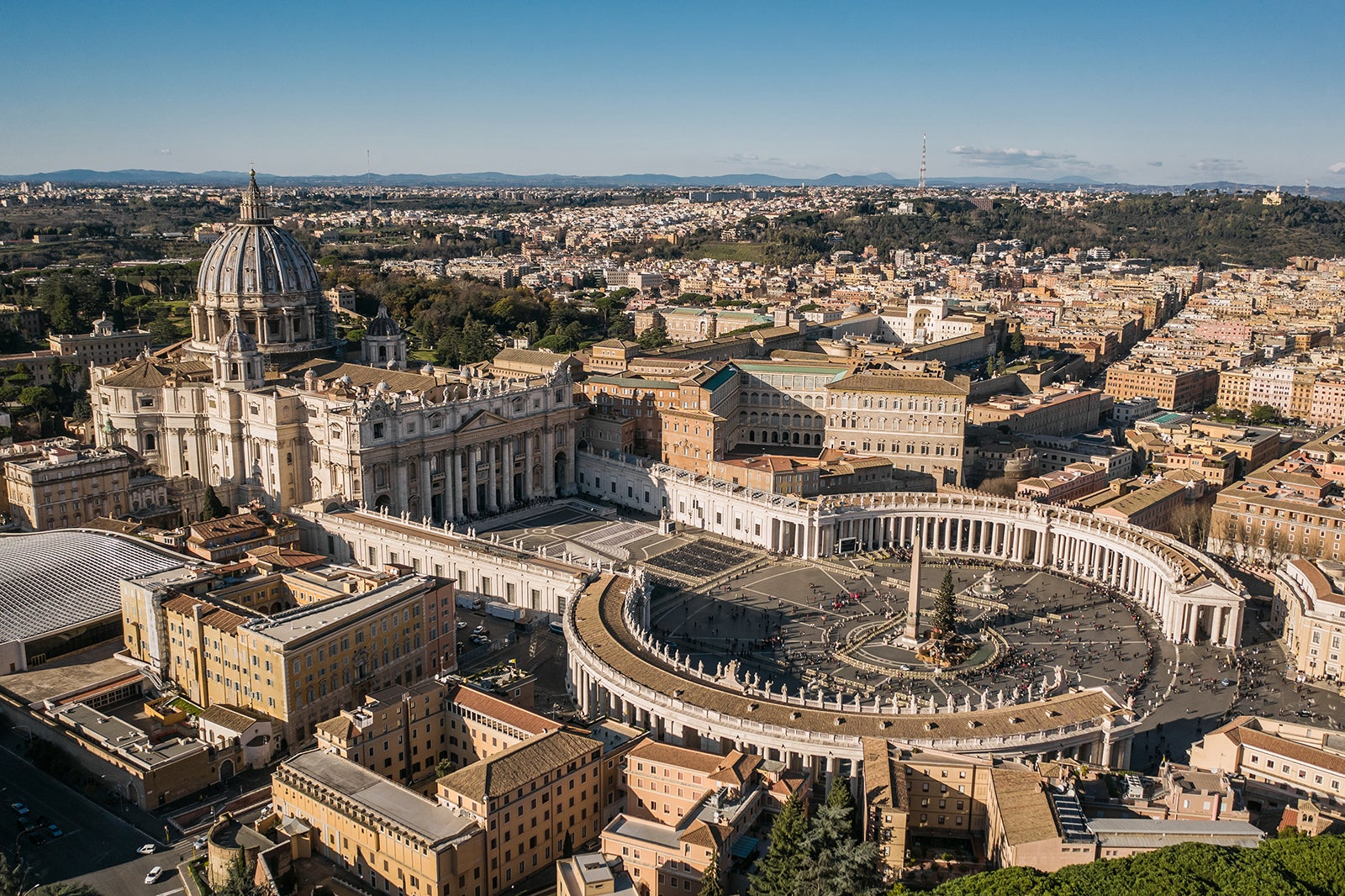
Image Source: au.hotels.com
St. Peter’s Basilica is one of the holiest sites for Christians. Also, St. Peter is considered to be buried at the site. It is the largest church in the world and is over 500 years old.
i) Masjid Al-Haram
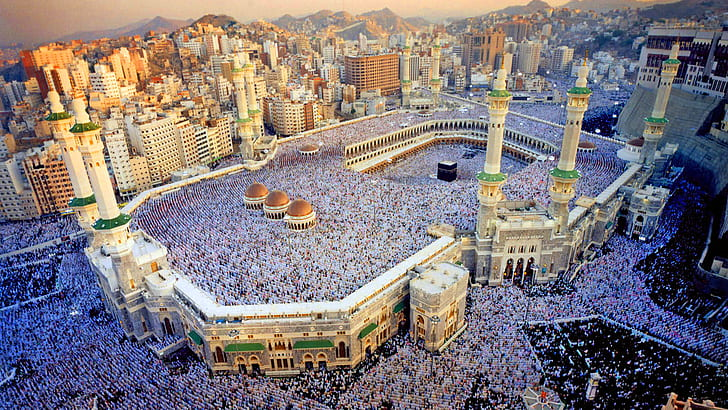
Image Source: wallpaperflare.com
Al-Haram, also known as the Grand Mosque or the Holy Mosque, is built close to the Ka’bah, the holiest shrine in Islam. The mosque receives millions of people every year.
j) Basil’s Cathedral
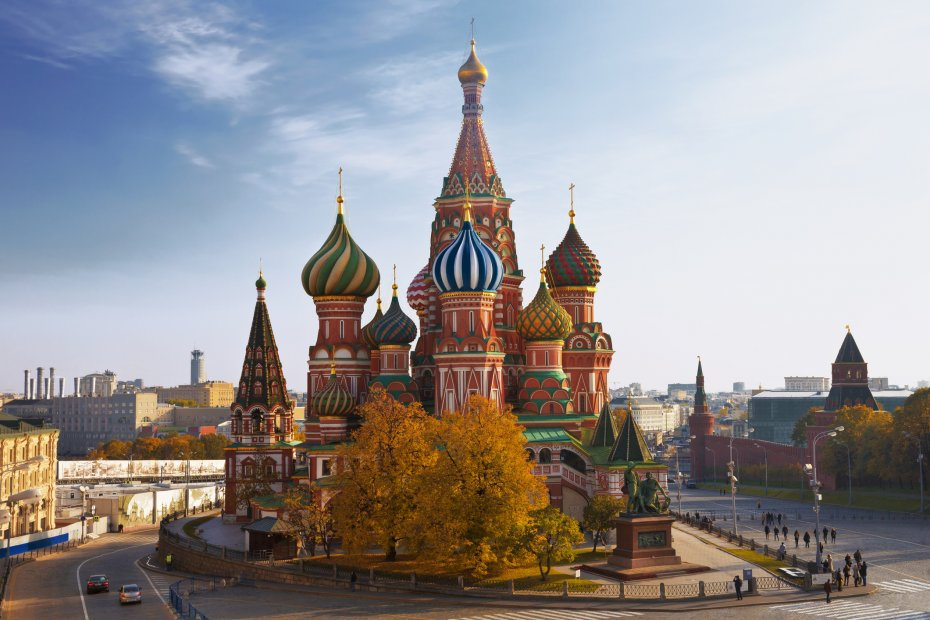
Image Source: dookinternational.com
Basil’s Cathedral is perhaps the most colorful we will get to see. The cathedral is very significant and considered irreplaceable by the Soviets. It is symbolic, with each dome representing the assault on the city of Kazan.
k) La Sagrada Familia
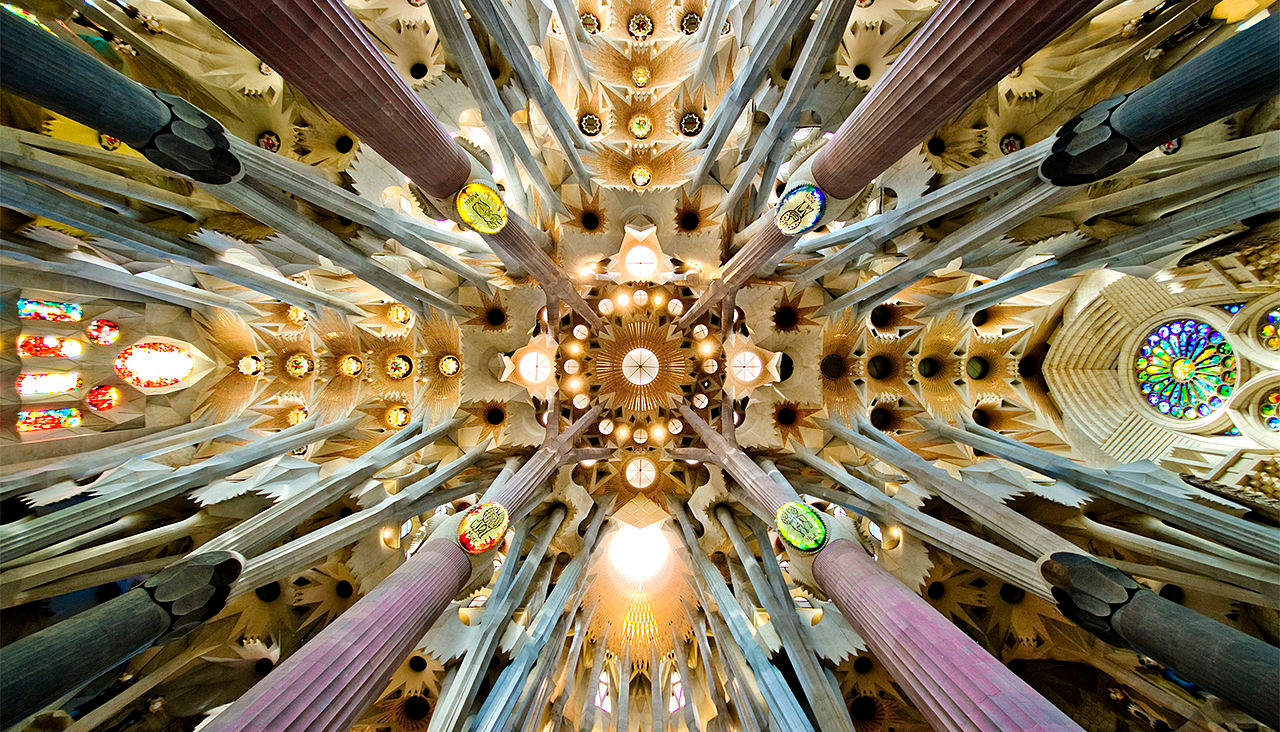
Image Source: 99percentinvisible.org
La Sagrada Familia is almost 150 years old and is still under construction. Unlike other churches, the cathedral has already made it into the list of UNESCO world heritage centers, although it is still incomplete.
l) Cathedral of Santa Maria
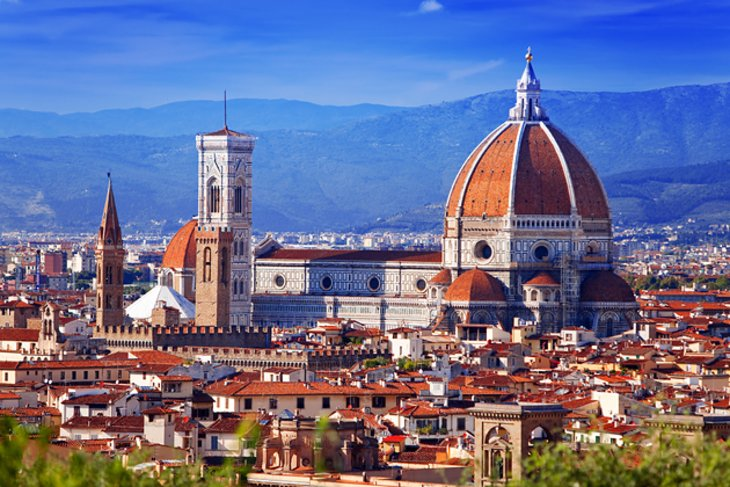
Image Source: planetware.com
The Cathedral of Santa Maria is the most dominant and notable structure in any Florence aerial photograph. The cathedral’s memorable and beautiful design complements the buildings around it.
The impressive examples we have seen above are magnificent and have inspired different architects to borrow techniques when designing buildings. Here are some ways designers incorporate religious symbolism in building design.
4 Different Ways to Incorporate Religious Symbolism into Your Designs
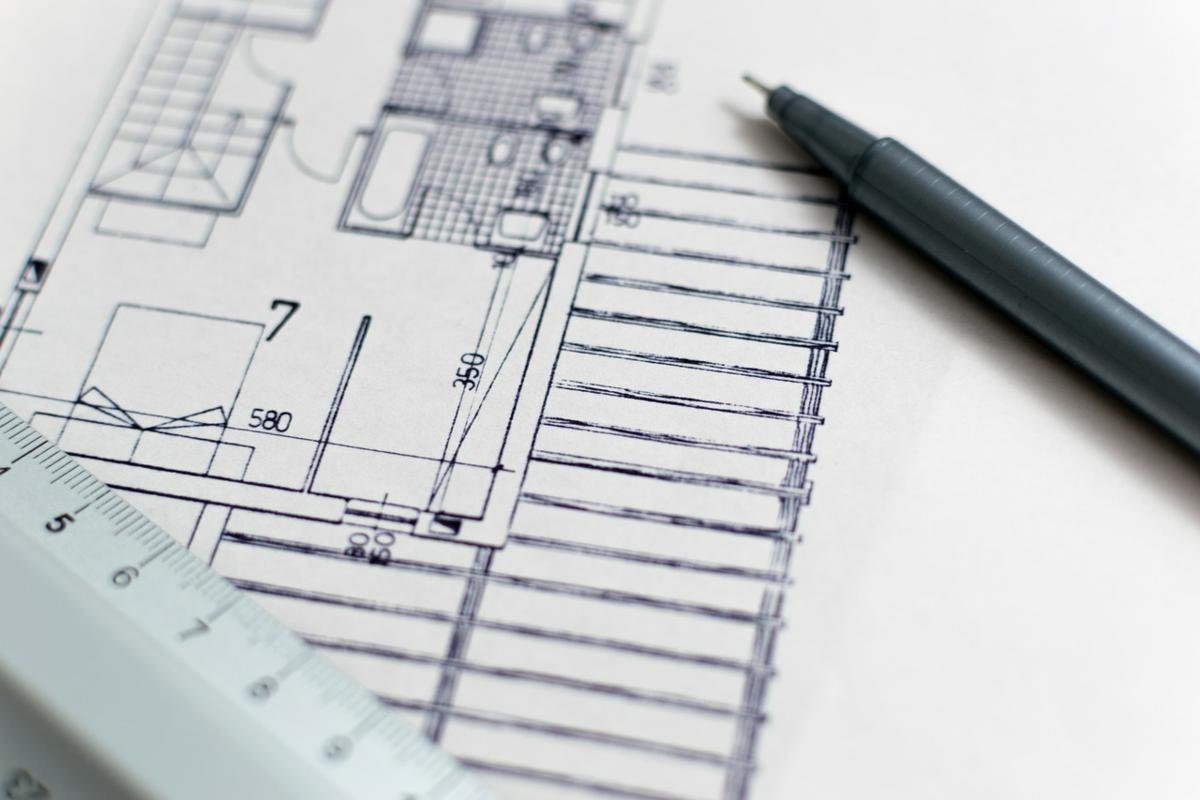
Image Source: newschoolarch.edu
a) Stained Glass Serves As an Eye-Catching and Appropriate Medium for Religious Expression
It’s not just Gothic architecture suited to the use of stained glass. Scenes of religious significance, symbols of faith, and anything else for that matter can be depicted in smaller-scale windows that can suit homes of all sizes.
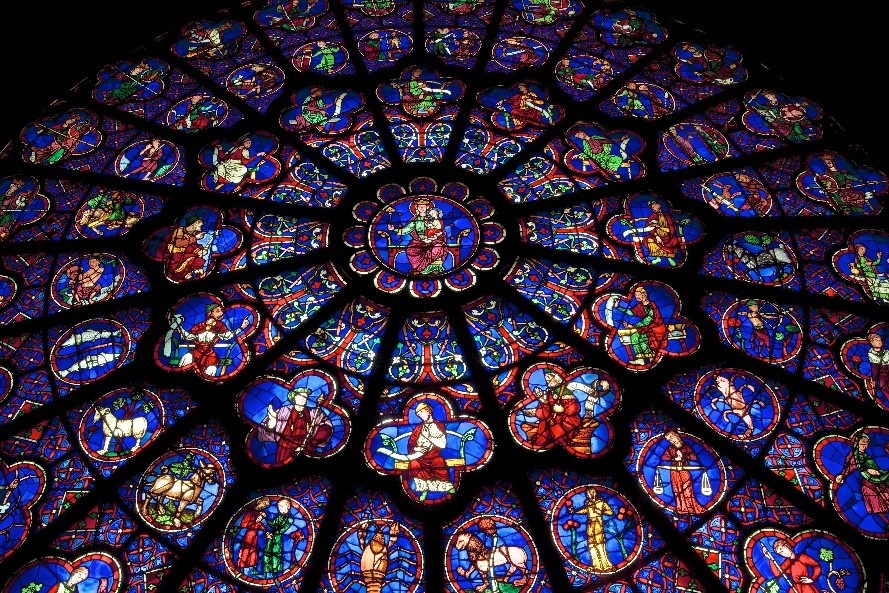
Image source: friendsofnotredamedeparis.org
From a practical perspective, the issue with stained glass is that it can partially or obscure the view out of any window or door into which it is set. On the plus side, it’s a way of letting more natural light into a room or hallway without compromising privacy for the occupants, so it’s something of a double-edged sword.
b) Using Religious Pieces for Interior Design As a Versatile Option
If you’re looking for a more malleable and versatile way to incorporate religious symbolism into a space, then religious pieces like those found at House of Joppa are ideal.
From plaques and signs, which include messages of devotion and faith, to statuettes, crucifixes, and even holy water fonts, many different products cater to this niche right now.
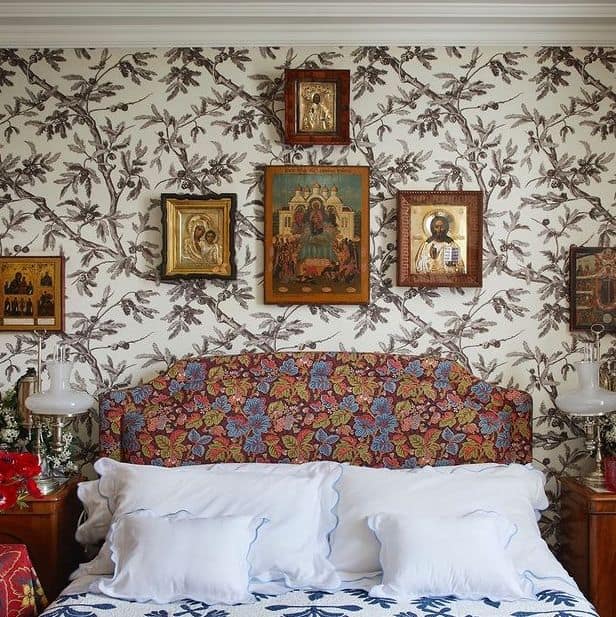
Image source: housebeautiful.com
The trick to incorporating religious symbolism as part of an interior design plan is not to overdo it. Subtlety is better as it prevents you from overwhelming a room with overt religiosity while still leaving a few noteworthy touches on display to get the message across.
And, of course, the amount of variety means that you don’t need to worry about needing to compromise any other aspect of your vision for a room to squeeze in something religious.
c) Harnessing Repeating Patterns As a Nod to Religion
Another element of religious symbolism worth touching on from a design perspective is the relative simplicity of many symbols and the opportunity that this presents in terms of transforming these into repeating patterns across a property.
From metal railings and handrails on stairways to curtains and carpets, there are all sorts of potential uses for patterns adapted from well-known symbols.
Tiled flooring can also work well for this purpose, and you might even pick a motif to reflect in larger-scale elements of your design, such as in the shape of windows or the profile of an entire building.
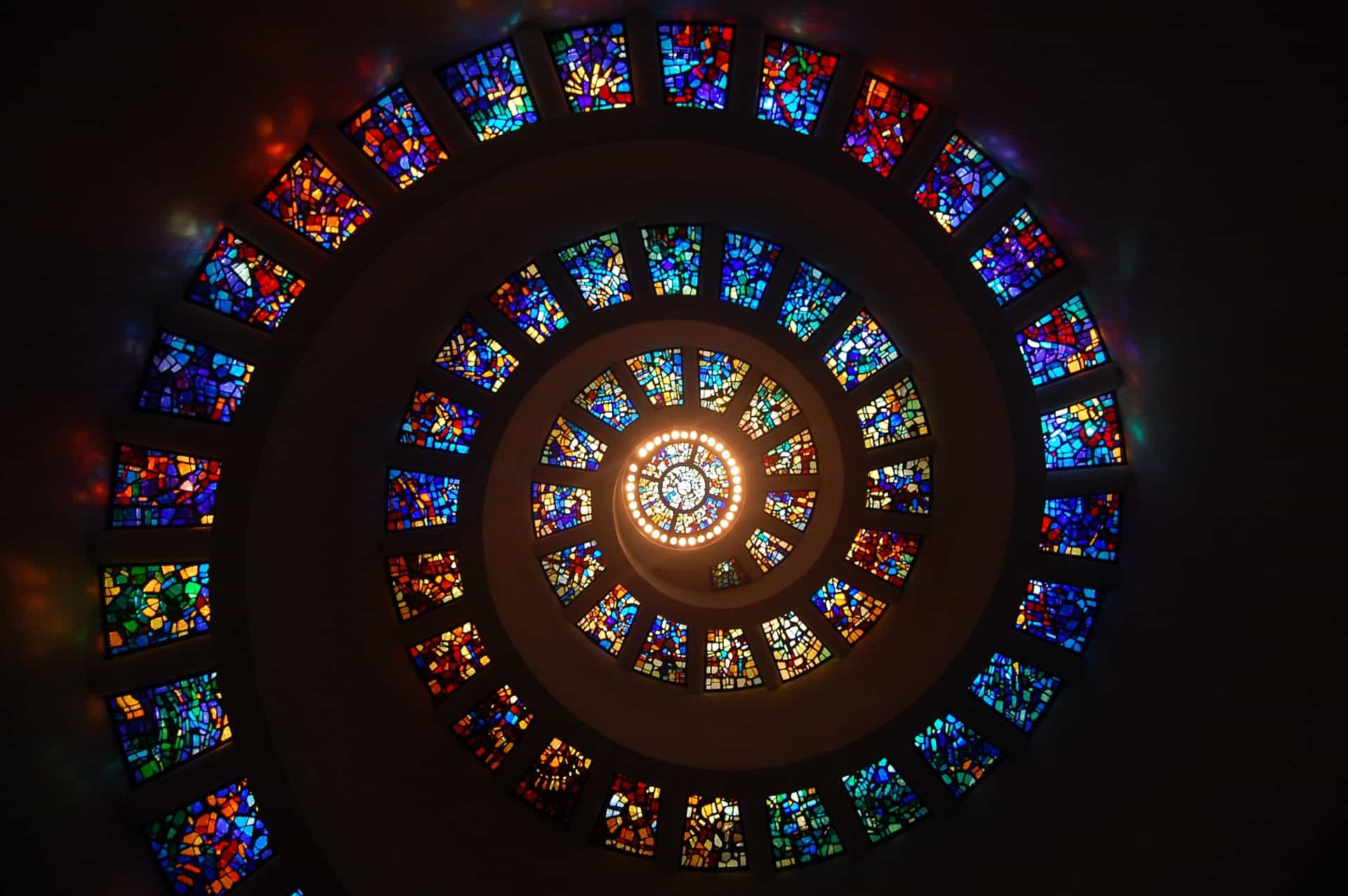
Image source: godsbreath.net
Suppose you’re creating this design for a client. In that case, it’s sensible to get their feedback, with the boldest use of religion-adjacent patterning likely to be a more divisive choice that has to be given the green light as early in the process as possible.
d) Thinking About the Role of Color to Create a Deeper Meaning
The thing about symbolism is that it’s open to interpretation and, in turn, can be tweaked and repurposed in whatever way you see fit. There’s no need to be too prescriptive about how elements of religion are included in designs, as a result, and the color is a good way to say something special while stepping off the beaten path and avoiding clichés.
Colors are attached to different religions in different ways, from the striking reds and blues of early Christian art to the gorgeous greens and yellows of Hinduism.
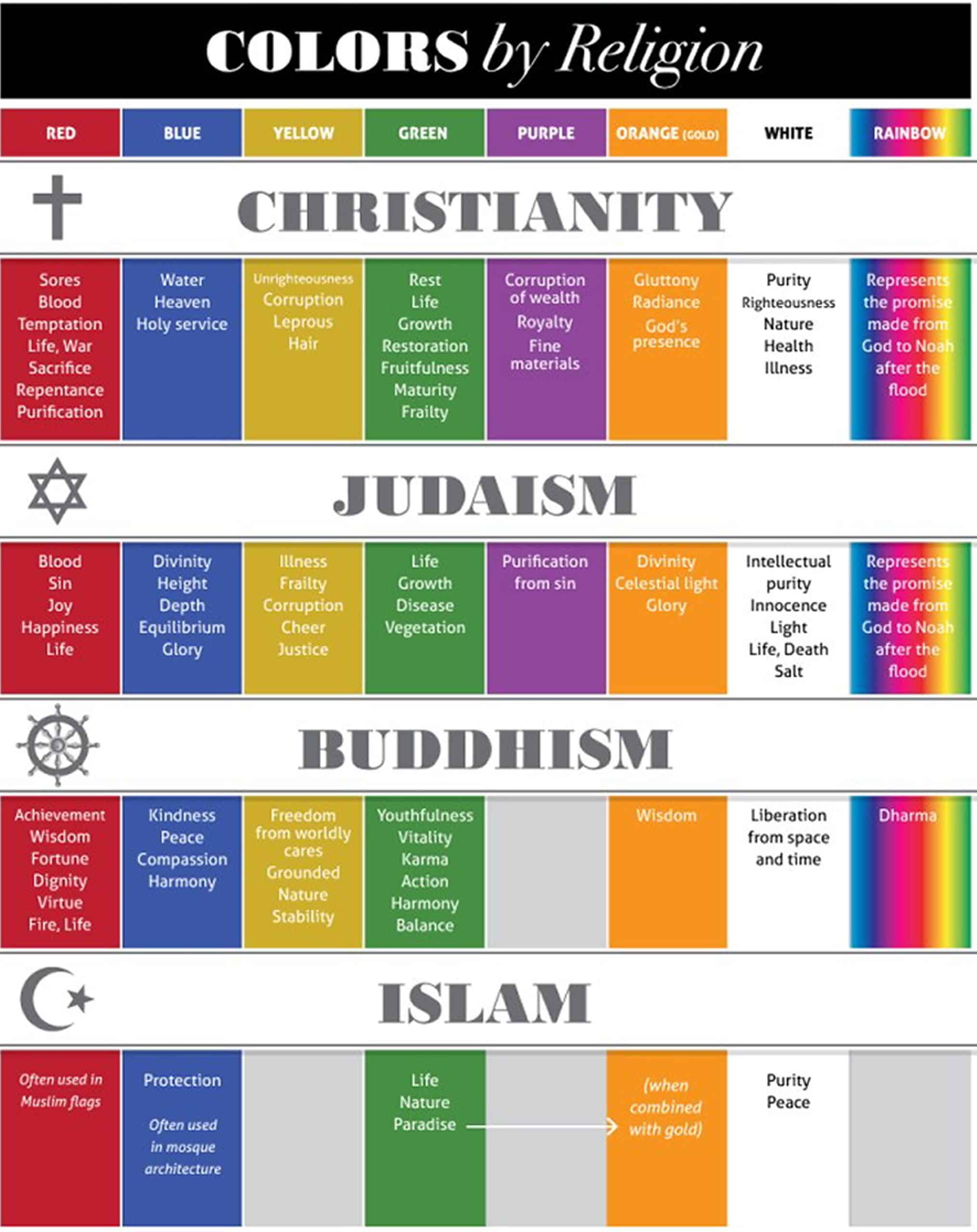
Image source: coloursandmaterials
Indeed, there is a wide variety of interpretations of colors across every major and minor religion on the planet, which gives designers the freedom to apply meaning to their choice of hues and also avoid the need to be too overt with the symbolism if subtlety is preferred.
Frequently Asked Questions About Religious Architecture
1) Why is religious architecture important?
Religious architecture preserves the traditions of a given religion by providing a place where text can be kept, and tradition can be adequately practiced.
2) What are common features in religious architecture?
Religious architecture can be identified through symbols and iconography, which are the most common elements in most religious buildings.
Symbolic structures can include religious elements like the crucifix, the star of David, the crescent moon and star, and more.
3) What are five of the religious styles of architecture?
Religion has taken up a mixed modern and traditional approach to buildings. However, some structures follow styles of architecture, including Byzantine, gothic, baroque, renaissance, Romanesque, and more. There are more than five styles, and they often depend on the religion, location, architect, and other factors that go into choosing a design.
4) What is symbolism in religious architecture?
Symbolism is used to physically represent and emphasize the beliefs and principles of a given religious group. For instance, the carvings and statues in Hindu temples embody the Hindu belief.
Final Thoughts
Religion is one of the most influential things in the world and has been for a long time. Since most institutions are housed in buildings and represented by symbolic structures, religion is no exception. Religious buildings and structures are identifiable depending on the religion because of the different symbolic elements used in architectural design.














